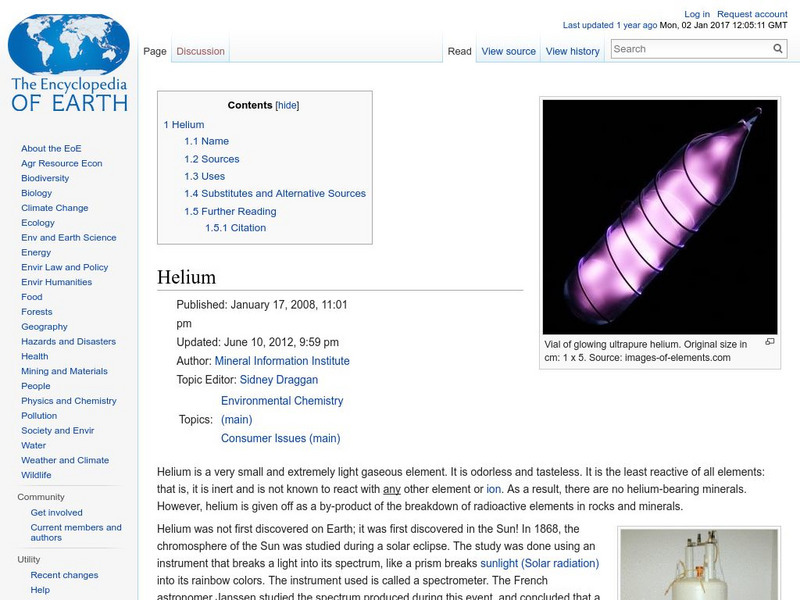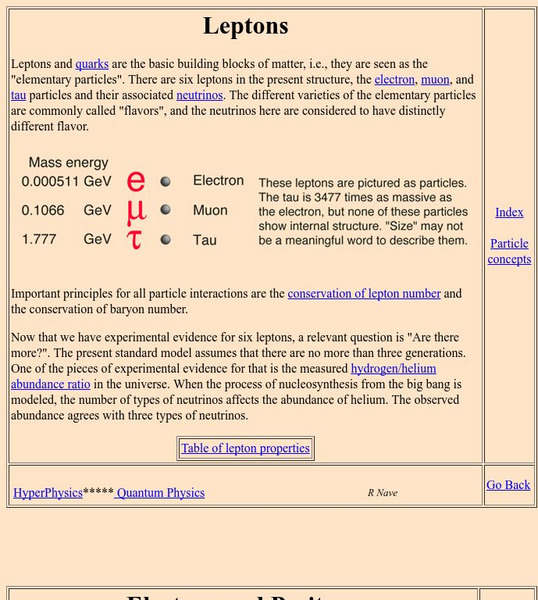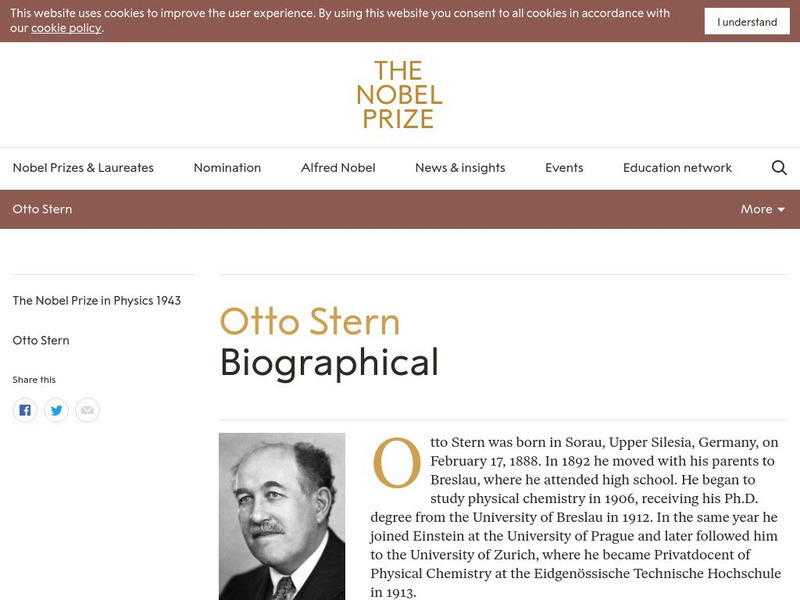Hi, what do you want to do?
NASA
Making Oxygen and Carbon Dioxide
Some like it hot! Scholars observe both exothermic and endothermic reactions as part of the carbon dioxide oxygen cycle. First, scientists demonstrate (or watch) a chemical reaction to create pure oxygen using fire for...
Curated OER
Matter: All That "Stuff"
In this chemistry worksheet, students learn about matter, including atoms, electrons, protons, neutrons, compounds and chemical properties. They use this information to answer the 10 questions on the worksheet. The answers are on the...
Curated OER
Periodic Table of the Elements: Noble Gases
Students research how neon signs are made and design their own. In this periodic table lesson, students familiarize themselves with the noble gases on the periodic table. They watch a video, research how neon signs are made, and design...
Curated OER
Individual Gas Laws
Students learn the relationships between the different properties of a gas and use previous knowledge and make predictions. They predit and explain certain phenomena of gases using their chemical knowledge.
Curated OER
The Sun
Middle schoolers draw diagram of sun and its layers, including photosphere, chromosphere, corona, convection and radiative zones, and core. Students then describe each layer in their own words, define sun spot cycle, and describe solar...
Curated OER
Periods and Groups; Valence Electrons; Masses
In this periods, groups, valence electrons and masses worksheet, students are given information about all these components of the periodic table. Students identify 4 elements in specific periods and groups, they find the valence...
Curated OER
Household Chemistry
Students use indicator paper to determine if substances are acidic, basic, or neutral. They test for Ph levels in them. They investigate the effect of oxygen on darkening fruit cut and exposed to the air. They observe vitamin C as an...
Curated OER
Balloons
Young scholars explore the different types of balloons. In this materials lesson students can complete several experiments including building their own hot air balloons, making balloon animals and experimenting with static...
Curated OER
Periods and Groups; Valence Electrons; Masses
In this elements worksheet, students read how the elements are organized in periods and groups in the periodic table. Students use the periodic table to find the valence electrons and calculate molecular mass. This worksheet has 20 fill...
Science Struck
Science Struck: Properties of Noble Gases
Read about the properties of the six noble gases - helium, neon, argon, krypton, xenon, and radon.
Encyclopedia of Earth
Encyclopedia of Earth: Helium
Information about the element, Helium, atomic number 2. Covers its discovery, physical and atomic properties, how abundant it is on the Earth, its uses, possible substitutes, and permissible exposure limits.
Ducksters
Ducksters: Chemistry for Kids: Elements: Helium
Explore the element helium and its chemistry including atomic weight, atom, uses, sources, name, and discovery. Plus properties and characteristics of helium.
How Stuff Works
How Stuff Works: How Helium Balloons Work
This article explains how helium is able to keep balloons afloat in the air. Compares them to how hot air balloons work. Includes a video, and some activities to try for testing the principles being discussed.
Georgia State University
Georgia State University: Hyper Physics: Leptons
This site has a definition and properties of Leptons, the "Basic building blocks of matter." There are links to table of properties and more information.
Chemicool
Chemicool: Helium
This site from Chemicool provides a set of tables summarizing a great deal of information on helium and its properties.
Other
Virtual Chembook: Density Applications With Gases
DENSITY is a physical property of matter, as each element and compound has a unique density associated with it. Density defined in a qualitative manner as the measure of the relative "heaviness" of objects with a constant volume. For...
Nobel Media AB
The Nobel Prize: Otto Stern Biographical
This is a brief biography on the life and scientific work of Otto Stern, a physicist honored with the Nobel Prize in physics for his "development of the molecular ray method and his discovery of the magnetic moment of the proton."
Khan Academy
Khan Academy: Ideal Gases in Medicine
This passage tests your knowledge on the kinetic molecular theory of gases using the five-question quiz.
Upper Canada District School Board
Tom Stretton's Chemistry Pages: The Noble Gases
Through an online slideshow format, learn about the chemical properties and practical uses of the noble gases. Includes questions at end.
Science Struck
Science Struck: Facts About Noble Gases
Learn how noble gases were discovered, what their properties are, and their uses. Includes a chart listing the six noble gases and some details about them.





















